There are hundreds of types of scale insects you can encounter. Most of them have a drastically different appearance.
Feeding on plants, scale insects can even be found indoors.
Part of the Homoptera order, scale insects can be found all around the world, especially on crops or in areas of thick vegetation with plenty of plants.
Table of Contents
What Are Scale Insects?
Homoptera or scale insects are types of small insects that live and feed on sugar-rich plant sap.
They need the sap for the amino acids in it and they can overcrowd certain plants when hungry
Scale insects move using short legs. Some scale insects have wings that may be used for flying.
Scale insects are seen as serious pests on many crops that are very difficult to eliminate.
These insects have a waxy cover which means they might evade insecticides and even survive heavy insecticide use.
Scale Insect Identification
Scale insects look like very small bugs sometimes not distinguishable from a plant bump.
These insects have short legs that aren’t visible and can have wings.
Coloring differs from one species to another. Scale insects can have marked bodies or uniform-color bodies.
Scale insects come in all colors such as white, gray, green, and brown.
Types of Scale Insects
1. Cottony Cushion Scale

This small-scale insect (Icerya purchasi) measures up to 5mm. It has a red-brown color but it appears white due to its waxy secretions.
Cottony Cushion scales only start to secrete this waxy substance as adults as its sticky nature helps them stick to plants.
These scale insects are pests of various woody plants and even of trees.
Cottony Cushion scales eat the leaves of citruses among other woody plants.
These scales have a migratory lifecycle on the same plant.
Eggs are laid on leaves that young scales eat. These scales move on to the trunk of the tree or the plant after reaching adulthood.
2. True Cochineal Bug

The True Cochineal Bug (Dactylopius coccus) feeds on cacti, similar to other types of Cochineal bugs.
These scale insects only feed on cacti of the Opuntia genus.
True Cochineal bugs are mostly known for their damage to cactuses. These scale insects are also known for keeping all types of predators away.
They produce a type of ceramic acid that protects them from various predators.
3. Beech Scale

Beech Scales (Cryptococcus fagisuga) are scale insects that feed on Beech Fagus trees.
These scale insects measure around 1mm. They are very small and identified by their off-white bodies.
Beech scales have brown eyes and are wingless. They have short thick antennae and long stylets they use to suck sap.
This species is known for reproducing through parthenogenesis without mating.
4. Euonymus Scale

Euonymus plants (Unaspis euonymi) are often invaded by Eonymus scales.
Known for their brown color, these scale insects grow to a size of 3mm as adults.
There are differences in the area of the euonymus they eat according to gender.
Males eat the small leaves of the plant while females affect its bark,
Euonymus scales reproduce quickly with 2 generations arising each season.
5. Cactus Scattered Cochineal

This genus of scale insects (Dactylopius opuntiae) is known to only feed on cactuses.
Cactus Scattered Cochineal is used to control cacti that grow on crops.
They drink cacti sap until the plant stops growing or until it dies. It can only be seen as a white clump of wax when attached to cactuses.
6. Wattle Tick Scale
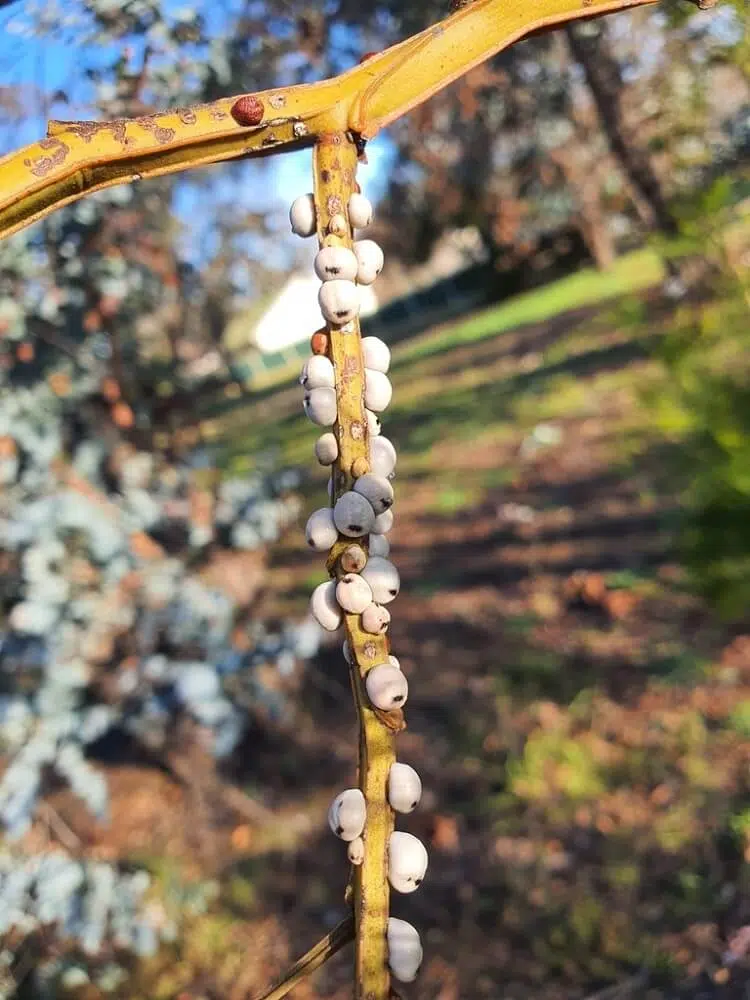
Wattle Tick Scales (Cryptes baccatus) get their names from their resemblance to ticks. These scale insects infest acacia trees in Australia.
Wattle Tick scales even look like ticks. They are some of the largest types of scale insects as they grow to 7mm.
Male Wattle Tick scales have wings and can fly.
7. Elongate Hemlock Scale

This Asian species of scale insect (Fiorinia externa) is known for infesting hemlocks, pine, and fir.
Common at high altitudes, these scale insects are very small.
Tens of Elognate Hemlock scales can be found on a single pine needle.
The first manifestation of their presence involves a changing color from green to yellow on the tree.
8. Citrus Mealybug

These scale insects (Planococcus citri) are common all across the world.
They grow to a size of 2-3mm and are known to be an invasive species of all types of fruit-bearing shrubs and trees.
Citruys Mealyubugs prefer warm climates but they are also common in temperate climates, especially indoors in greenhouses.
The scale insects are seen in high numbers on crops in tropical and sub-tropical climates.
Scale insects of this genus have a pink-white color partially covered in a white wax-like substance.
9. Brown Soft Scale
This scale insect (Coccus hesperidum) feeds on all parts of citruses and greenhouse plants.
Its invasive nature can be determined by dying plants or by checking the underside of leaves for small brown spots.
Brown Soft scales are known pests of citruses.
They often infest papaya crops or orchids in greenhouses.
Scale insects of this genus are often controlled by spraying insecticide or by encouraging natural predators which can eliminate them from crops.
10. Cottony Camellia Scale

Cottony Camellia Scales (Pulvinaria floccifera) are often found on camellia flowers. They’re a common sight for multiple types of flowers in Florida.
Known for their white and tan elongated bodies, these scale insects feed on the sap of various flower leaves.
Infestations can be mild or severe. In mild infestations, the host flower doesn’t die.
More serious infestations can kill the flower as young Cottony Camellia scales feed on the veins seen on flower leaves.
11. Breadfruit Mealybug
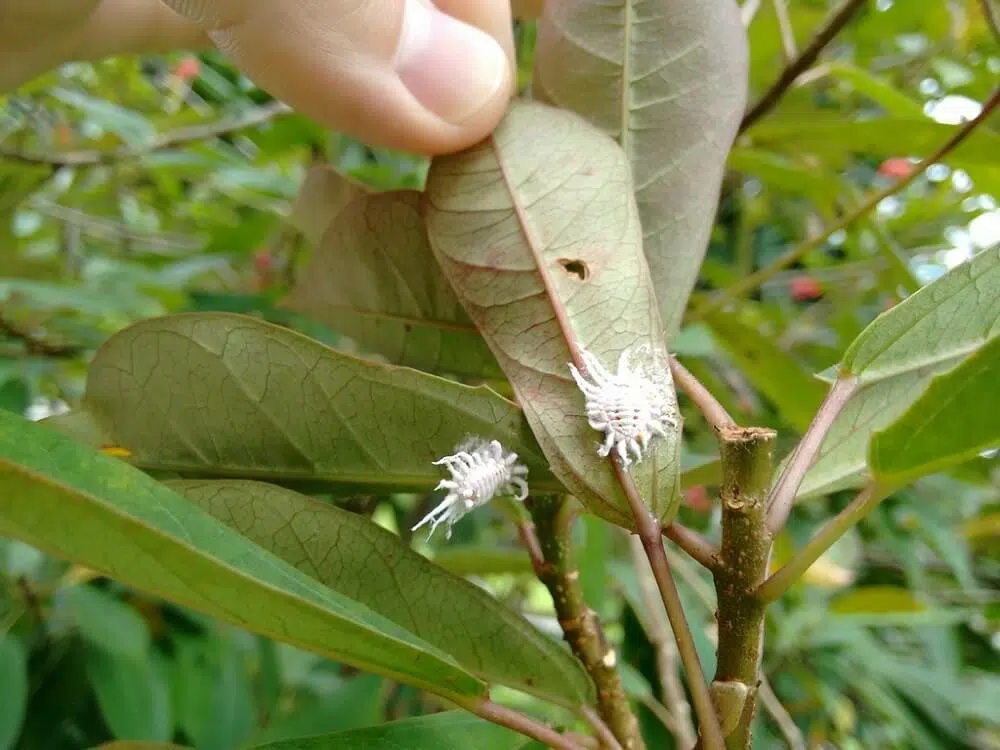
The Breadfruit Mealybug (Icerya aegyptiaca) is common in Asia and Africa.
This scale insect is known for effective fruit-bearing trees. It infests avocado, banana, and mango among others.
Breadfurit Mealybugs may not always be controlled through the use of pesticides, especially on fruit-bearing trees.
These scale insects can be controlled by predators such as ladybugs.
Eliminating ants on the trees is recommended when it comes to attracting more predators that eat these small-scale insects.
12. Long-tailed Mealybug

These small white-scale insects (Pseudococcus longispinus) are identified by their white bodies with horizontal striations.
The insects have 4 long tail-like abdominal projections that inspire their name.
Long-tailed Mealybugs eat cotton, orchids, apples, or citruses among other ornamental or fruit-bearing plants.
The economic damages Long-tailed Mealybugs cause are vast.
Flowers with these types of scale insects are refused in the retail business.
13. Chinese Wax Scale

The Chinese Wax Scale (Ceroplastes sinensis) is found all around the world. It has an oval body like most scales and a purple-red color.
This type of scale insect is commonly seen on avocados.
Overwintering on avocados is also possible for this species.
One of the biggest concerns about the Chinese Wax scale is the production of honeydew. This allows fungi formation on avocados.
14. Pine Needle Scale
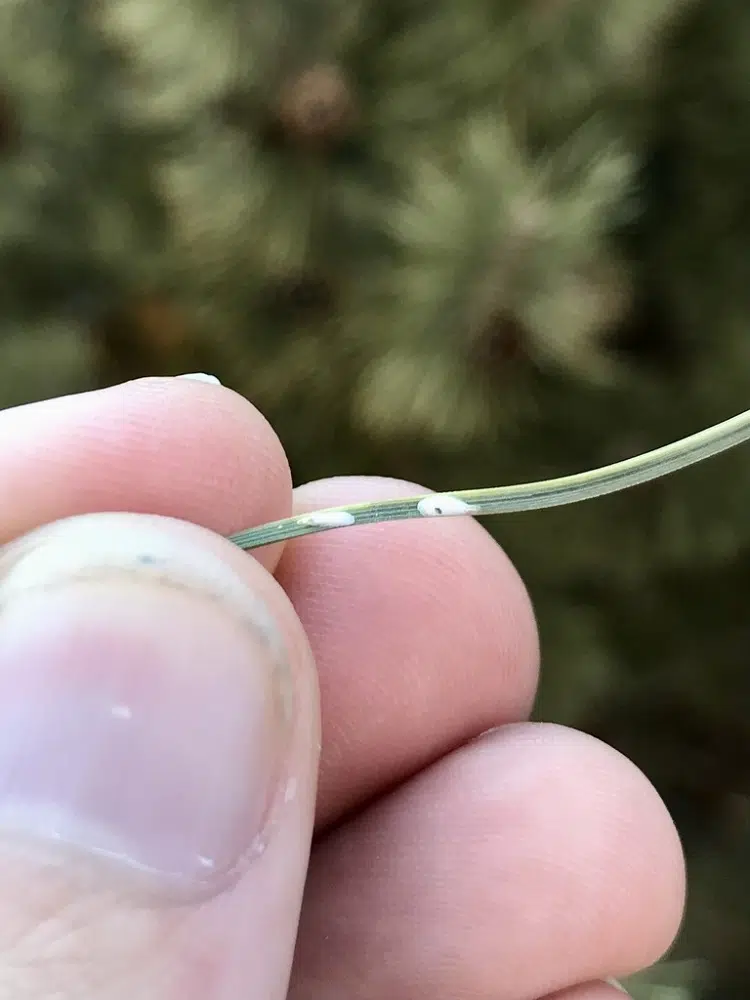
Pine Needle Scale (Chionaspis pinifoliae) insects first appear in June. They are not observed until the pine needles start to become white.
They live and feed on pine needles. Once a pine tree’s needles are infested, they can easily turn yellow.
Pine trees and fir can even die as a result of more serious infestations.
Pine Needle scales cannot kill a pine tree from the first year. It takes a few years for the tree to die as they never settle on newly-formed pine tree needles.
A loss of vigor is characteristic when it comes to serious infestations early on.
15. Pink Wax Scale
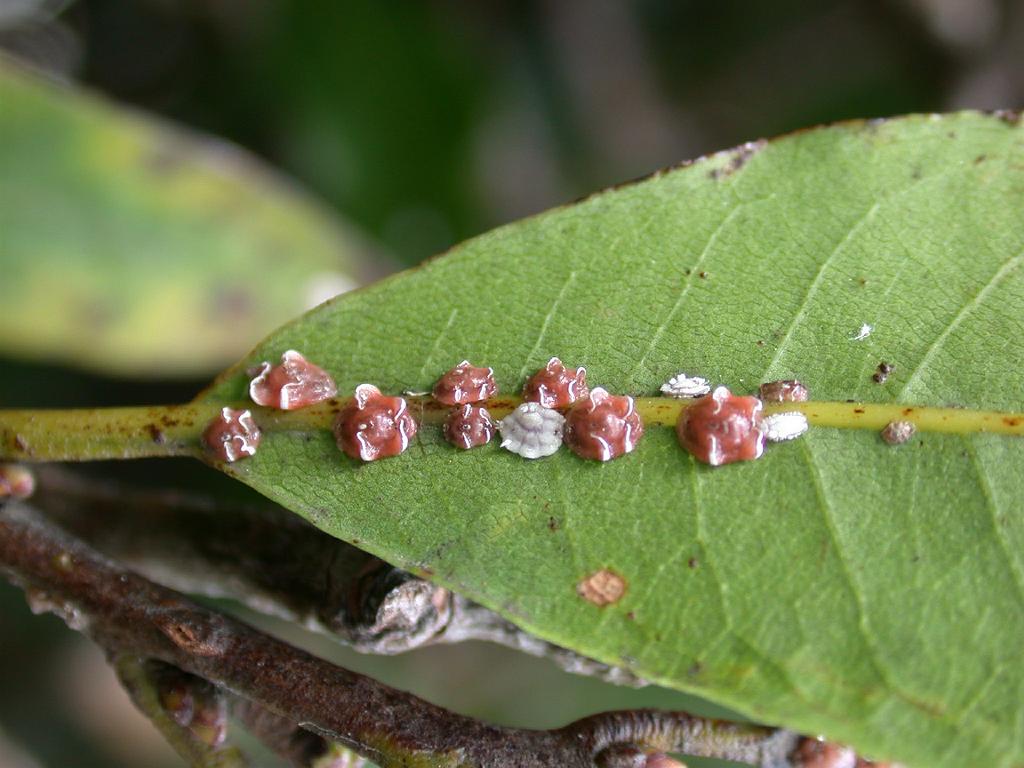
The Pink Wax Scale (Ceroplastes rubens) has either a pink or red color. These scale insects are common on almost all continents.
They affect herbaceous plants by feeding on sap from their leaves.
Further impact is caused by the Pink Wax scale by the excretion of honeydew which then raises the chances of seeing fungi growth.
Most Pink Wax scales are seen on fruit-bearing citrus trees and mango trees in tropical climates or greenhouses elsewhere.
16. Indian Wax Scale
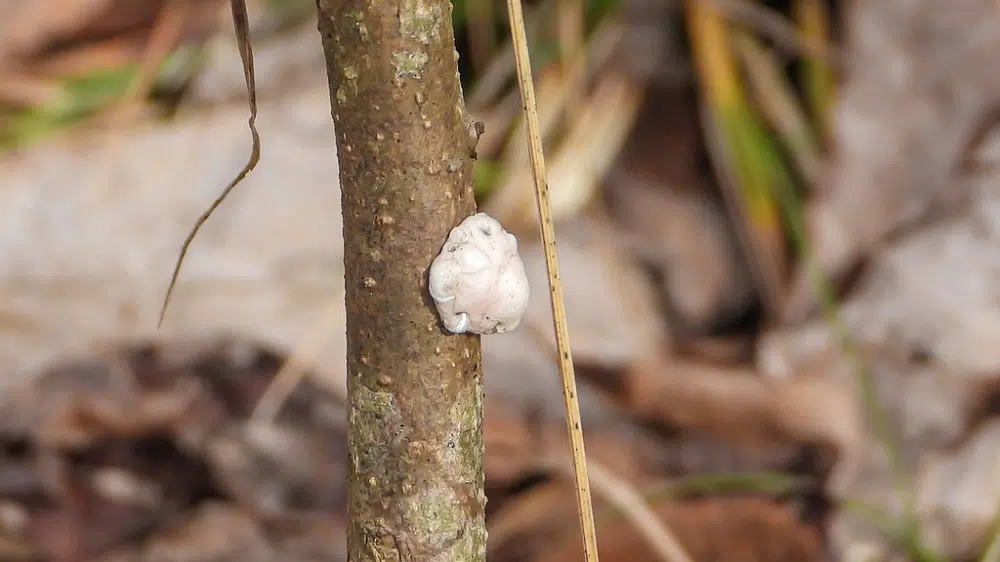
Indian Wax Scales (Ceroplastes ceriferus) mostly infest the twigs areas of various plants.
These scale insects are common in states such as Florida where they impact decorative flowers, figs, or Eugenia.
Indian Wax scale insects have a small red to the brown body and they’re barely visible as the body is flatter than on other species.
Honeydew secretions are known to impact the host flowers.
Indian Wax scales begin to become active in March in warm states such as Florida.
17. Great Giant Scale

This scale insect (Coelostomidia zealandica) can be found in New Zealand. It has a pink body with white fur-like hairs.
It grows to a maximum length between 6 and 15mm.
The species is seen on many local trees and its larger size compared to other scale insects means it also produces more honeydew than others.
Geckos are part of the insects that feed on this honeydew.
Further differences are visible between males and females.
The male Great Giant Scale grows to a size of up to 5mm. Unlike females, males also have wings and they can fly.
18. Nettle Ensign Scale

These scale insects (Orthezia urticae) are known for eating nettle. While nettle is their main food, they can be seen on other plants and flowers.
Nettle Ensign scale insects are identified by their overlapping wax layers which makes them appear a few times larger.
This white wax also makes them look like a plant secretion rather than a small bug.
Since nettle comes from Northern Europe, the Nettle Ensign scale is most popular in Northern Europe.
It continues to eat nettle late into the fall.
19. Seychelles Scale
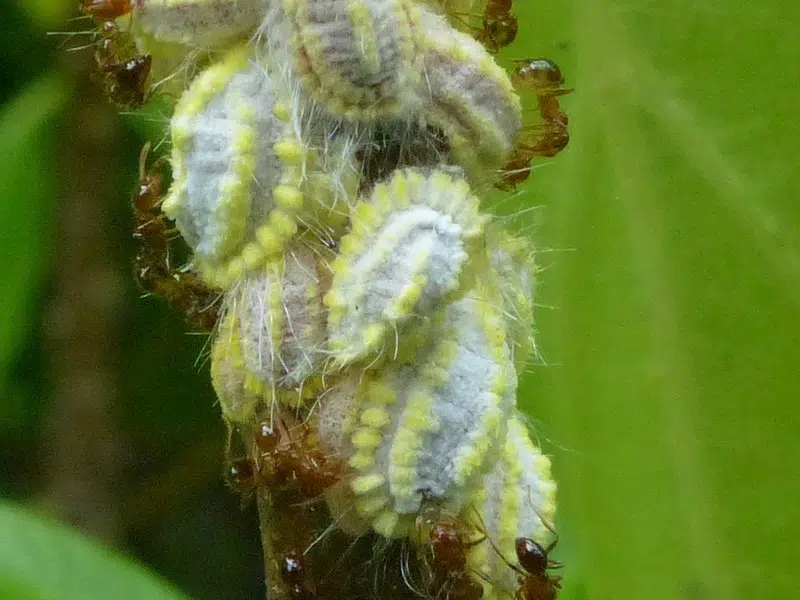
Seychelles Scales (Icerya seychellarum) are a common sight on avocados and other woody plants.
These scale insects have a flattened white appearance as wax covers them completely.
Some of the early signs of the Seychelles scale infestations include yellow leaves.
These scale insects are mostly killed by using insecticide.
Some predator bugs are also encouraged to eliminate. You need to remove vegetation and trim the trees to stop ants from invading them as they can keep some predators away.
20. Black Olive Scale

This small circular scale (Saissetia oleae) insect is a known pest of olive trees in Australia.
Its economic damages are severe as it can infest olive trees in high numbers. Known to be brown-red, this species turns white as an adult with its waxy exterior.
It secretes honeydew, a sugary substance on leaves. This honeydew secretion attracts plenty of ants that keep predators away.
Some of the worst reactions of olive trees to its invasion are to stop making fruits, often up to a few years. This is the time when the Black Olive scale is discovered.
21. Crape Myrtle Bark Scale
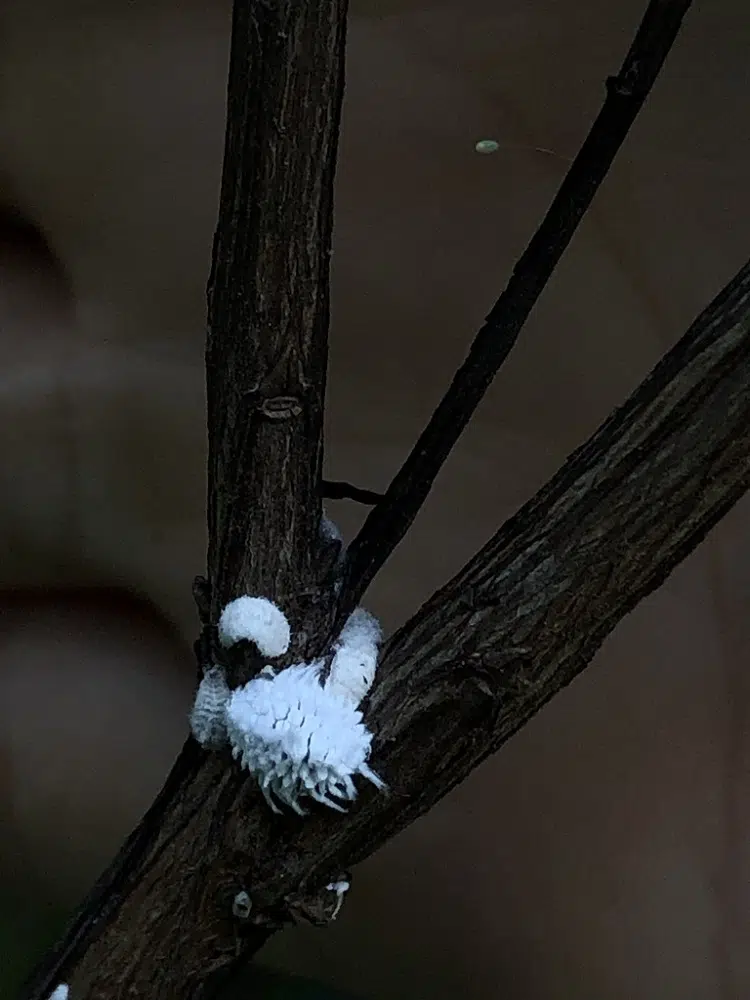
Crapemyrtles (Eriococcus lagerstroemiae) and other decorative trees are impacted by this scale insect.
The Creape Murtyle Bark scale is only known for affecting the bark of ornamental trees.
They have a pink body covered in white waxy secretions. Scale insects of this genus also lay eggs in clumps covering them in the waxy secretion.
Up to 300 eggs can be laid at a time by a scale insect of this genus.
Crape Myrtle Bark scales are common in Texas and Arizona.
22. Creosote Lac Scale
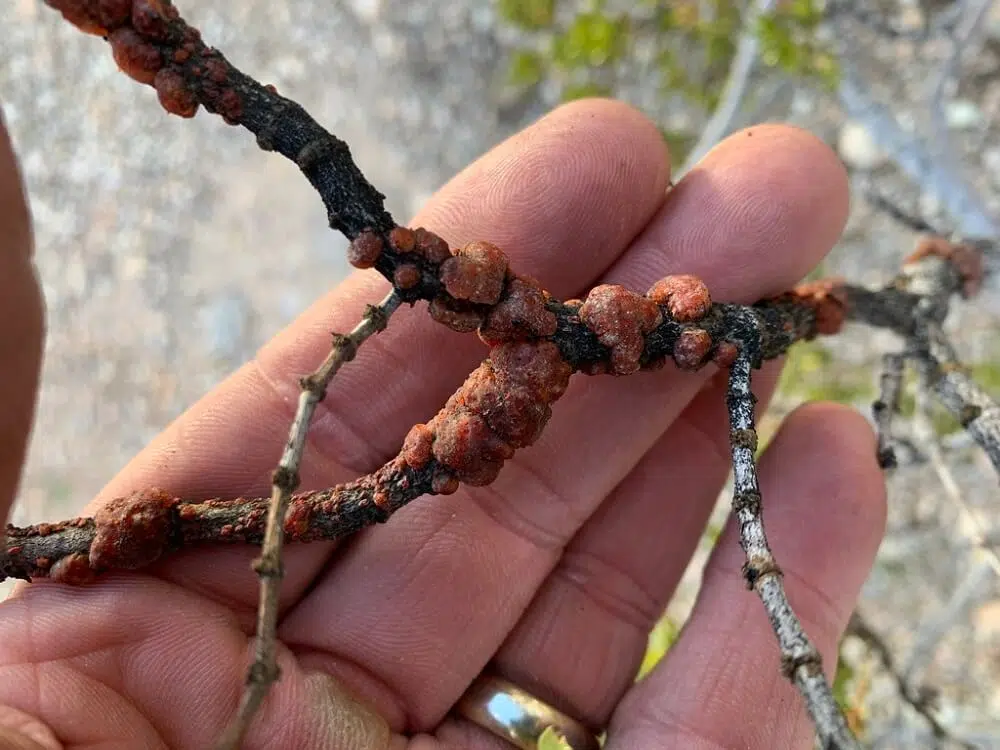
The creosote bush (Tachardiella larreae) is where the Cresote Lac scale is found. This means this species is common in California.
Identification is based on the waxy texture of creosote bark. These scale insects have a red or dark red color.
They are sometimes compared with resin as multiple Creosote Lac scales on a bush create the impression of a large amount of resin production.
23. Iceplant Scale
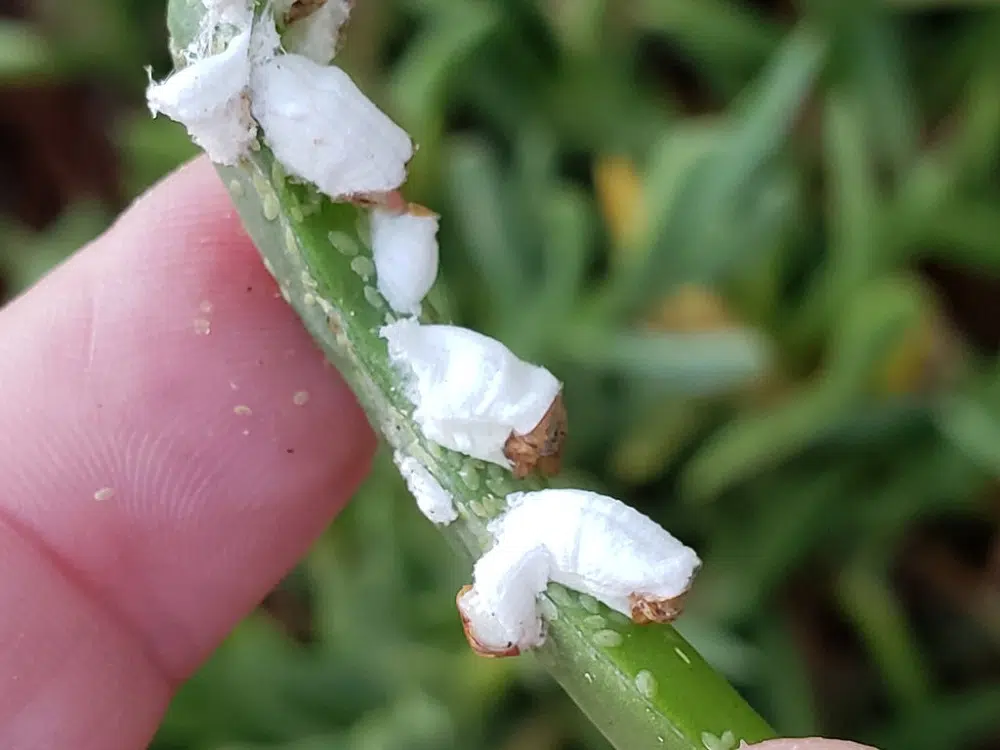
Aizoaceae plants (Pulvinariella mesembryanthemi) are often attacked by the Iceplant scale.
This species is also known for attacking other types of flowers.
The species originates in South Africa. It has spread to flowers only found in the coastal regions of the state to eventually become a common sight in other coastal regions of the world.
24. Barnacle Scale
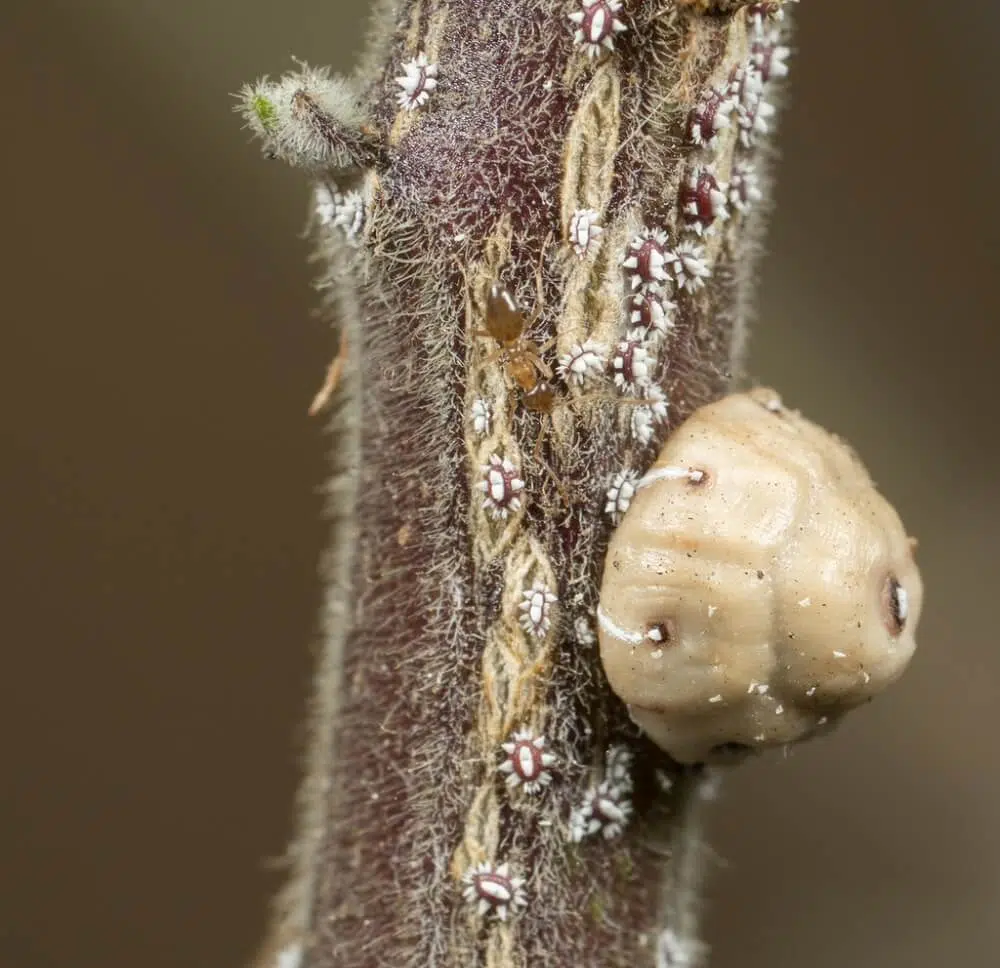
The Barnacle Scale (Ceroplastes cirripediformis) is one of the common insects that affect ornamental plants such as gardenias, citruses, and juniper.
This species creates a dome-shaped waxy exterior that is white or off-white.
It sucks the sap directly out of plants.
Part of the Coccidae family, this scale insect only sucks the sap during the day as it’s a diurnal species.
25. Black Scale

Black Scales (Parasaissetia nigra) are a common sight in Australia.
As its name implies, this is a mostly black or dark brown scale insect common on ornamental plants and woody plants.
The scale multiplies rapidly without mating as there are no male Black scales.
Ladybugs are the most important predators of this species. Orange-spotted ladybugs are its biggest enemy.
26. Oak Wax Scale
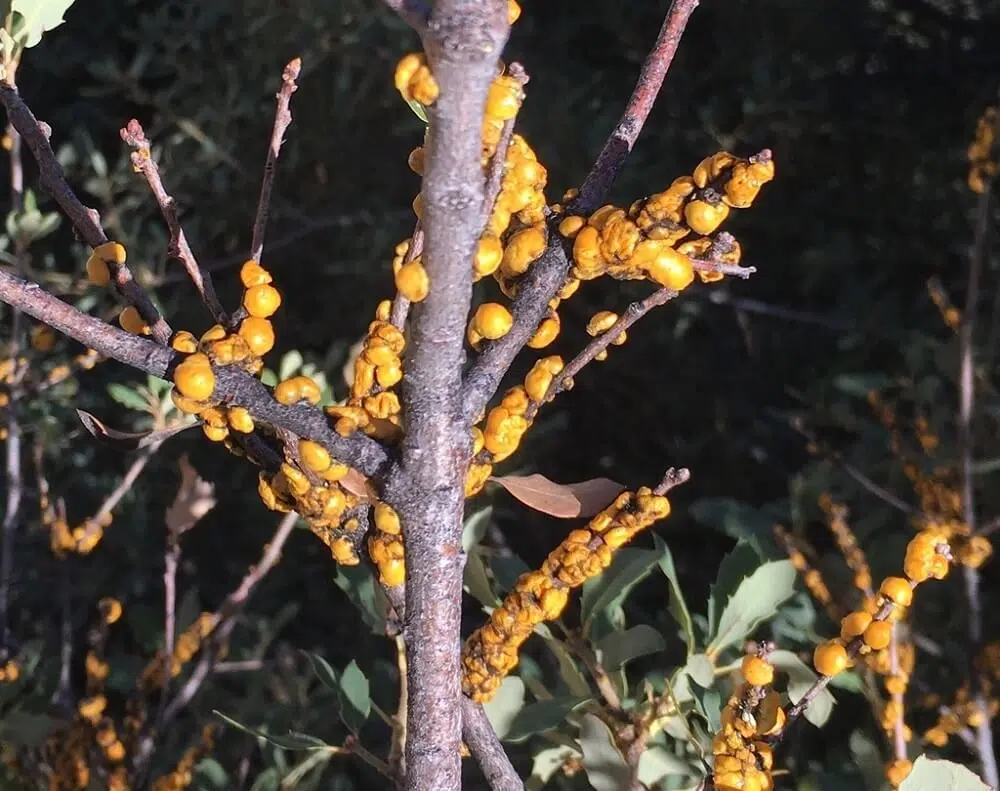
This species (Cerococcus quercus) is a common invader of woody plants in the Santa Rosa Mountains in California.
Almost all of its damages are seen on stems, rather than on leaves.
Oak Wax scales have varying colors. They can have a pale yellow lemon-like color or they can be bright orange as they mature.
The waxy secretion is the color people see on these insects. The insects cover entire stems and branches eventually stunting tree growth.
27. European Fruit Scale
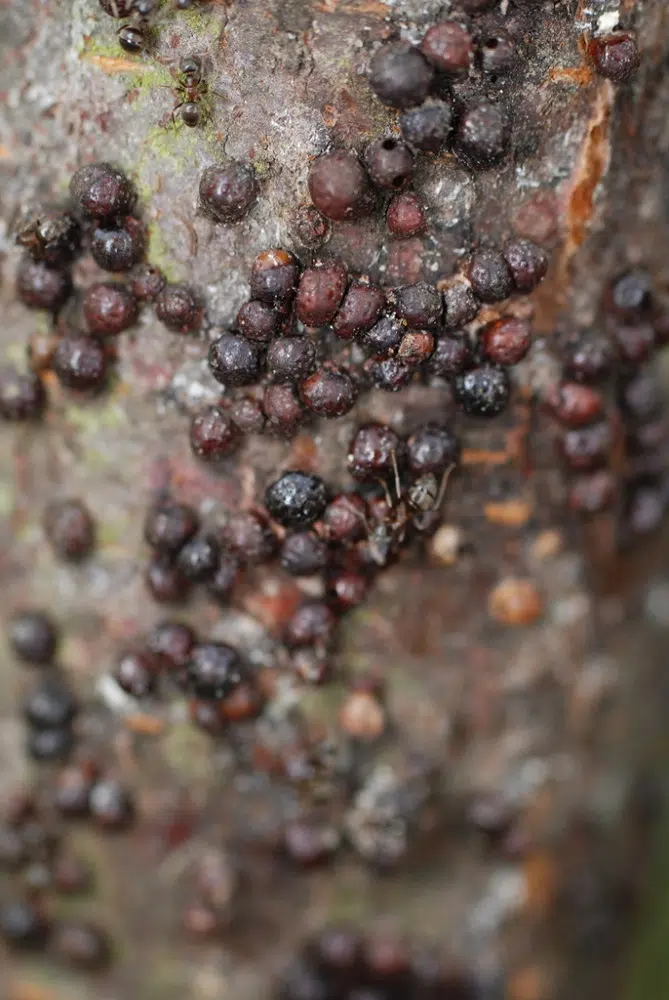
Commonly seen on shade trees, the European Fruit Scale (Parthenolecanium corni) is now present in North America.
The insect has moved on to other types of ornamental woody plants. It’s identified by a dark red to brown color and a flattened body with an almost circular shape.
Growing to a size of 3mm, the European Fruit scale is commonly tackled with horticultural oil.
Its damages are small to the fruit tree but can be considerable on new thin branches of a tree.
28. Fig Wax Scale

The Fix Wax Scale (Ceroplastes rusci) is believed to be native to North America.
Most Fig scales are only noticed in the spring when the overwintering nymphs turn to adults and begin secreting wax.
This wax is pink and not white or off-white as with other scale insects.
A common sight across California, the Fig Wax scale is known to impact many plants including those of the Anacardiaceae and Rosaceae families.
29. Greenhouse Orthezia

The Greenhouse Orthezia (Insignorthezia insignis) is one of the most damaging species of scale insects.
These small bugs are known for originating in the tropics but they have survived in greenhouses even in temperate climates.
A common sight in Hawaii, the Greenhouse Orthezia is a species known for its damage to popular commercial crops such as coffee, olives, and citruses.
30. Four-winged Gall
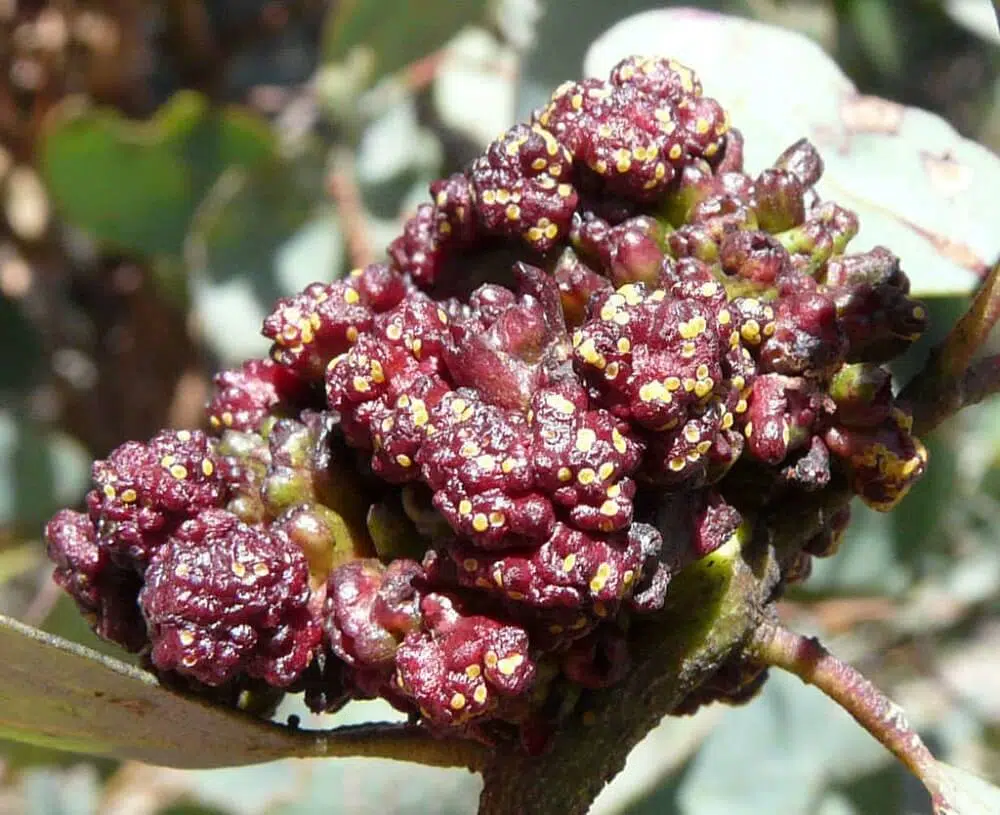
The four-winged Gall (Apiomorpha munita) is a winged scale insect common in Australia.
It attacks a wide range of trees including eucalyptus.
The species is known for creating gall-like structures on trees.
The Four-winged Gall is one of the few scale insects that have both males and females.
It’s only the female that lives inside the gall as males move around looking for new mating partners.
31. Viburnum Scale
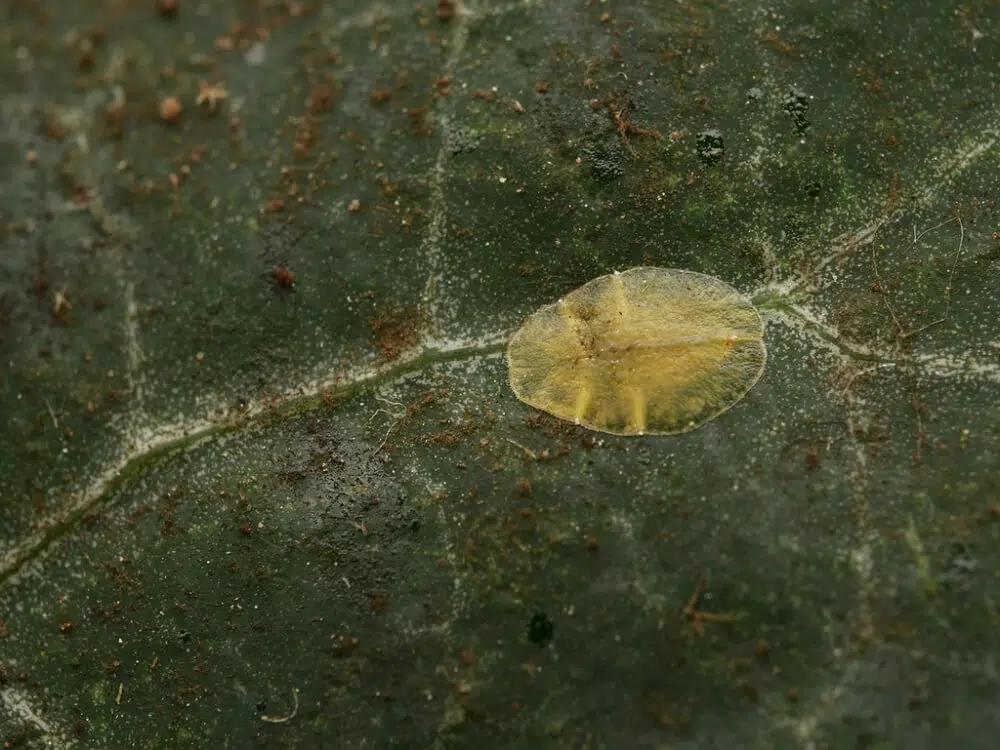
Vibrum Scales (Lichtensia viburni) affect common plants in gardens such as Vibrum tinus flowers and ivy.
This is one of the most common types of scale insects found in gardens that gardeners cannot overspray with insecticide.
Scales of this genus are transparent yellow. They are barely visible on leaves until they turn adults and start producing white wax that covers their bodies.
Ladybirds are a common threat and a method of removing these insects.
32. Blue Gum Scale

The Blue Gum Scale (Eriococcus coriaceus) is a common attacker of eucalyptus and blue-gum trees.
Some of the highest Blue Gum scale populations are seen in New Zealand.
These insects cause minor damage to the eucalyptus and are often left unattended.
Blue Gym scales are just one of the scales affecting eucalyptus but farmers and eucalyptus grow are more concerned about invasive species of beetles.
33. Hemispherical Scale
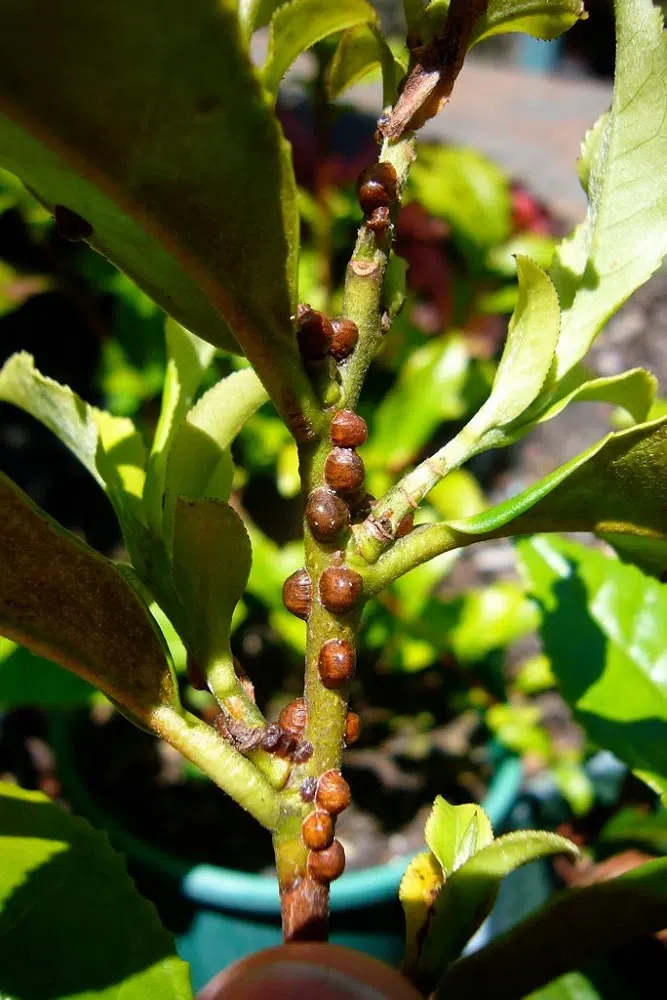
The Hemispherical Scale (Saissetia coffee) is one of the scale insects easiest to spot given its brown color and dome-shaped body.
Economic damages created by the species are vast. Hemispherical scales are one of the most common attackers of coffee and other ornamental plants.
Its impact is considerable due to its high reproductive rates but also because it affects leaves, branches, and stems.
34. Flocculent Flax Scale
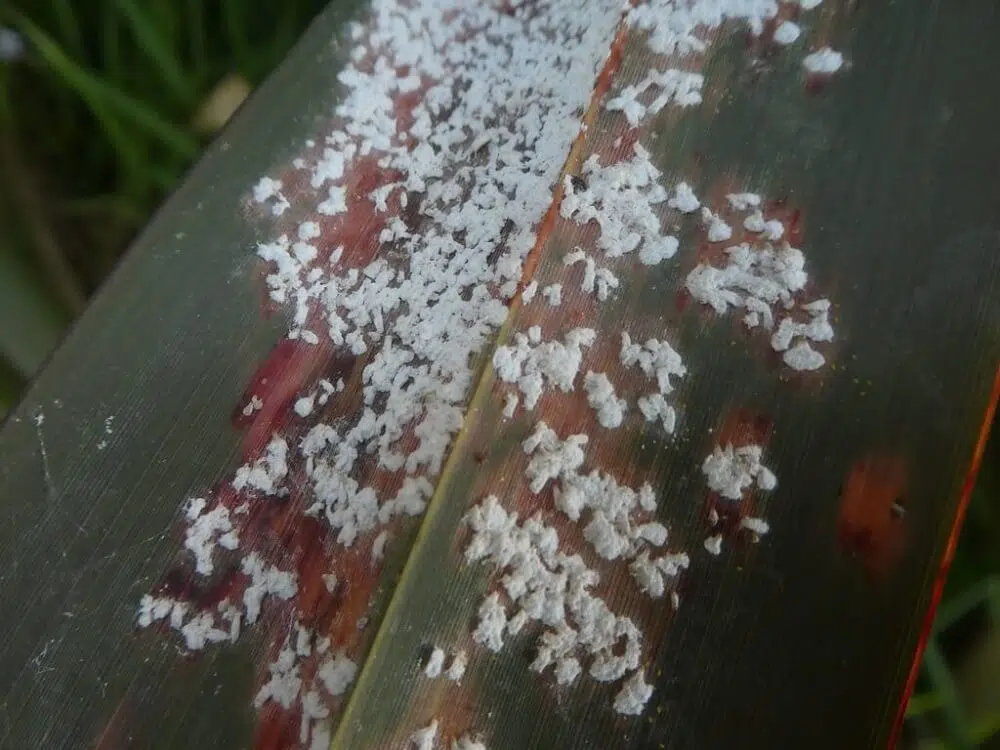
This species (Poliaspis floccosa) grows to an average size of 1mm being difficult to spot without its waxy exterior.
Scale insects of this genus are common on a few long-leaf plants such as Lilly.
The only attack is the long green leaves of plants.
Using long sucking mouthparts, the Flocculent Flax scale is known for piercing these ling dark green leaves.
New Zealand is the country with the most Flocculent Flax scale insects.
35. Cottony Maple Leaf Scale

These scale insects (Pulvinaria acericola) are common on soft maples, ash trees, and other hardwood trees.
These scale insects are identified by their waxy oval shape and white color. The head of the species might not be covered in wax as its brown color stands out.
Insects of the genus only invade a certain branch or multiple branches of a maple tree.
They rarely attack the entire tree. This means their damage is limited, mostly leading to the premature yellow of the leaves on that particular branch.
36. Cottony Hydrangea Scale

Cottony Hydrangea Scales (Pulvinaria hydrangeae) are common on woody plants.
Endemic to Europe, the species affect the host plant by reducing its vigor or healthiness but it rarely kills it.
Cottony Hydragena scales are seen on the foliage of the host plant and its stems.
These insects are rarely seen in the spring or when overwintering. They are only noticed in the summer when they start to lay colored eggs on leaves.
37. Soft Wax Scale
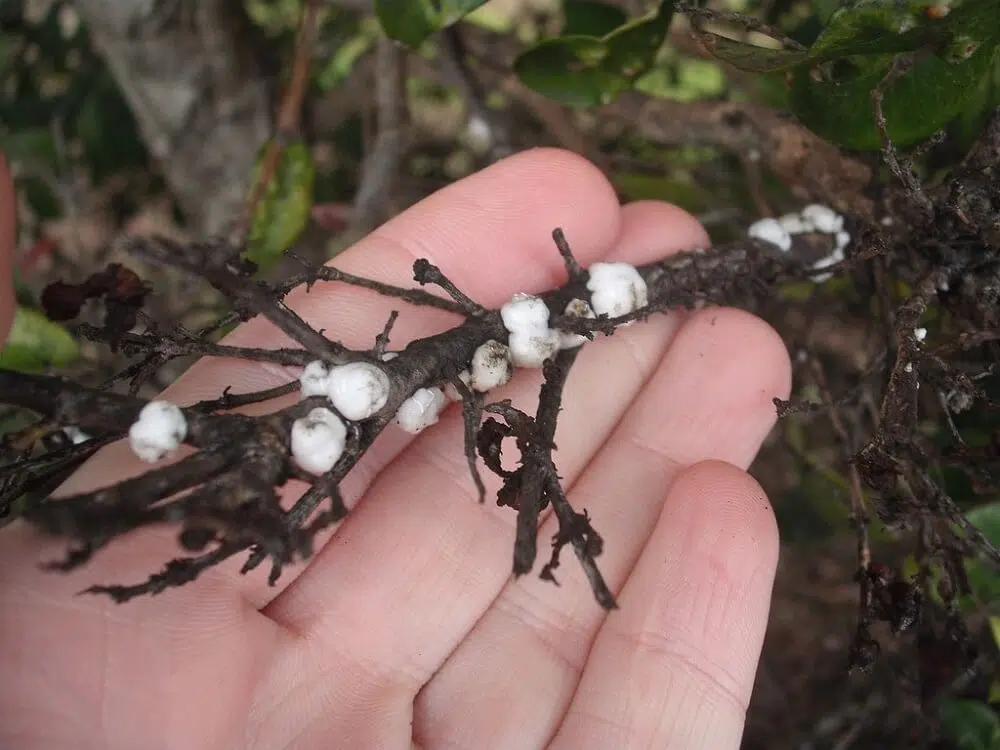
The Soft Wax scale (Ceroplastes destructor) is known to impact a wide range of flowers and trees. It’s a common sight on Myrtales.
This species only emerges in one generation per year.
It’s believed it reproduces by pathogenesis as males of the species haven’t been found.
Soft Wax scales have a variable size. They grow from 2.5mm to 3.5mm but they can reach a size of up to 6mm when they start to cover their bodies in soft wax.